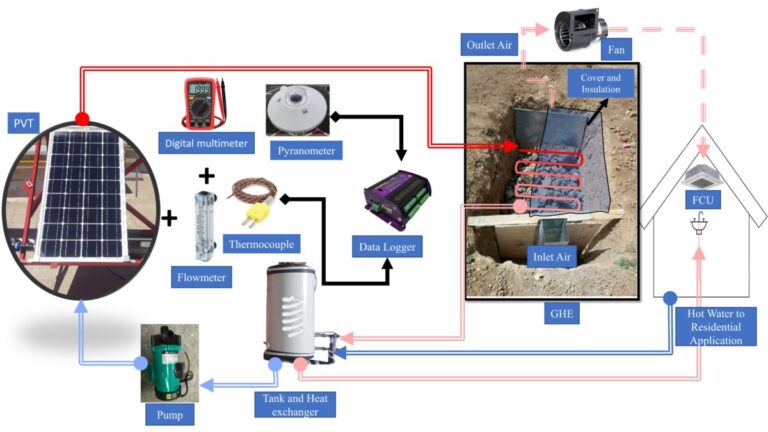Scientists in China have used ground heat exchangers based on volcanic tuffs to improve the storage capabilities and efficiency of photovoltaic-thermal systems. Their experiments showed that the proposed combination effectively improves the cooling and thermal efficiency of PV modules.
Researchers from China’s Xi’an Jiaotong University have attempted to combine photovoltaic-thermal (PVT) energy with thermal storage provided by ground heat exchangers (GHE) that use volcanic tuff as a heat storage material.
“This approach takes advantage of the unique thermal properties of volcanic tuffs, such as their high porosity and thermal conductivity, to improve cooling, thermal regulation and energy storage efficiency,” says the lead author of the study. Ahmad Alqatamin, narrated pv magazine. “By addressing the limitations of traditional PVT systems under varying temperature conditions, Our system provides sustainable energy storage and simultaneously cools the photovoltaic cells.”
The combined system consists of a PVT array integrated with a GHE, a heat exchanger in the thermal storage tank with a capacity of 150 liters, a centrifugal magnet pump, a fan, a flow meter, a data logger, a fan coil unit and various pumps and sensors located at various points. have been placed.
The scientists built a prototype in Tafila, Jordan, a location with high solar radiation, moderate humidity and wind conditions, as well as rugged terrain and marked temperature fluctuations. The PVT modules used for this project each have a nominal power of 50 W, a cell efficiency of 18%, a short-circuit current of 3.01 A and an open-circuit voltage of 21.6 V.
The GHE is based on a single hole filled with volcanic tuffs made of basaltic pumice that are abundant in Jordan and often used as building materials due to their lightweight properties and high percentage of silica, which the scientists say significantly improves their thermal capacity.
The GHE is placed in an excavation of 2.5 x 2 x 3 meters. “A fan was installed at the outlet of the square duct to draw ambient air through the system,” the research group explains. “As the air circulates through the system, it interacts with geothermal energy, resulting in heat dissipation in the summer and heat absorption in the winter.”
The thermal and electrical performances of the system were measured via a pyranometer, a digital multimeter and a variable mass flow meter, while the temperature measurements were made via K-type thermocouples. This data was then compared to that of a reference PVT system operating without the GHE.
The experiment showed that the volcanic tuff contributed to reducing the PV module temperature by up to 23% and achieved an energy conversion efficiency of 17.25% and a 6.25% higher power compared to the benchmark system of the PVT system without the GHE, which achieved an efficiency of only 16.65%.
The proposed system also achieved a thermal efficiency of 70.61%, compared to 58.66% in the reference array. “The ground heat exchanger consistently increased the exhaust air temperature by an average of 10 C above ambient temperature, even under varying ambient conditions,” the academics further explained. “This highlights the ability of the volcanic tuffs to stabilize heat exchange through their porous structure, ensuring reliable thermal performance.”
The new approach was described in the article “Experimental investigation of photovoltaic thermal integration with a ground heat exchanger using volcanic tuffs”, published in Applied thermal energy.
Looking ahead, the research team said it wants to investigate how the system works under different environmental conditions and assess its potential scalability for large-scale applications, while also conducting economic feasibility studies to evaluate costs and potential energy savings.
This content is copyrighted and may not be reused. If you would like to collaborate with us and reuse some of our content, please contact: editors@pv-magazine.com.


